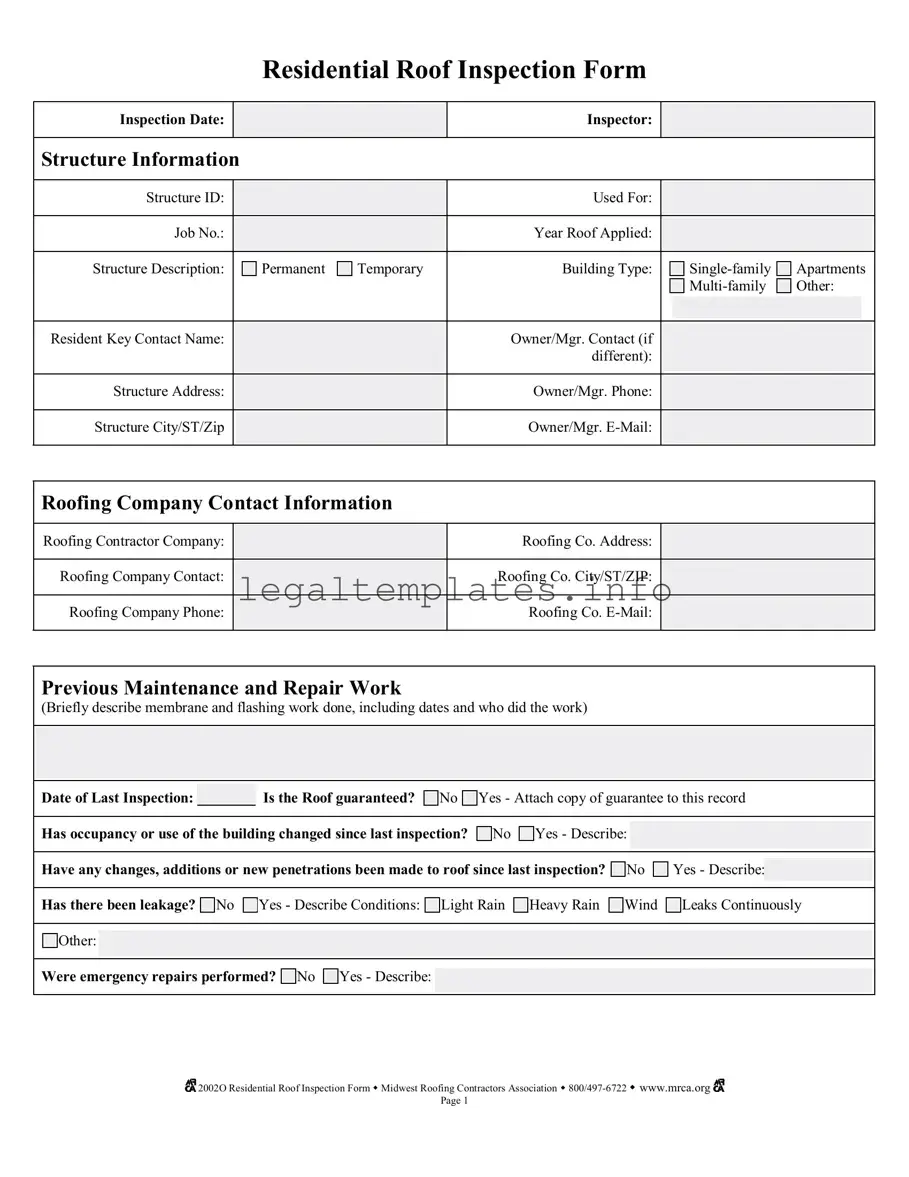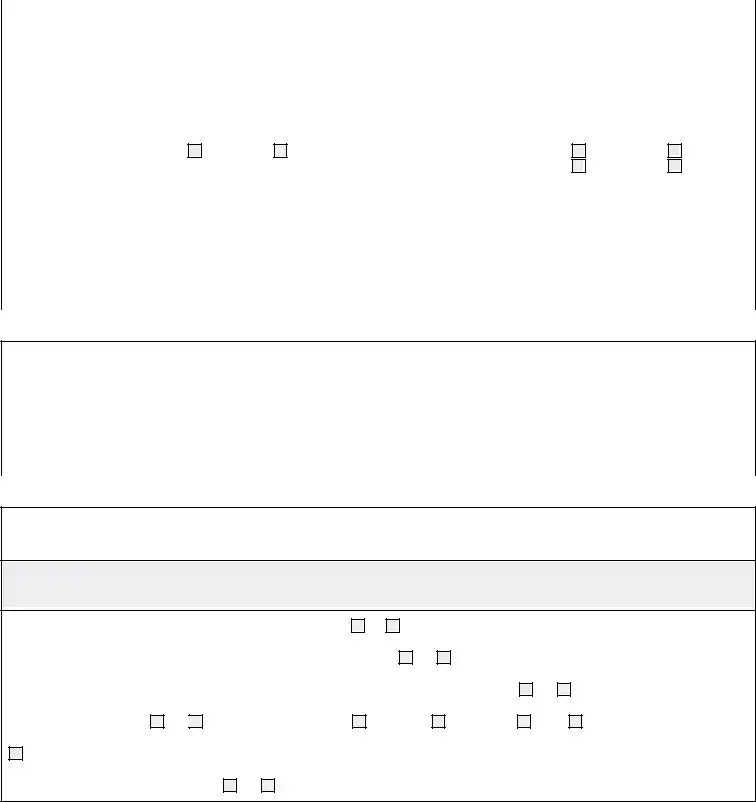What is the purpose of a Residential Roof Inspection Form?
The Residential Roof Inspection Form is designed for documenting the condition of a roof on a residential structure. It aids in identifying any areas in need of repair or maintenance, ensuring the roof remains in good condition, which can extend its lifespan and protect the property from weather-related damage.
Who should conduct the roof inspection?
Roof inspections should be conducted by a qualified inspector who has the knowledge and experience to accurately assess the condition of a roof. This could be a roofing contractor, a home inspector, or any professional with expertise in roofing systems and building construction.
What type of information is included on the form?
The form includes a variety of information such as the date of the inspection, the inspector’s details, and specific information about the structure including its address, type, and the key contacts. It details previous maintenance work, the current condition of various parts of the roof, and records of any changes or repairs made since the last inspection.
How often should a roof be inspected?
It's recommended that roofs are inspected at least once a year or after any severe weather events. Regular inspections help in identifying potential issues early on, which can prevent more significant and costly damage in the future.
What does it mean if a section of the roof is marked as "Poor, Immediate Action"?
A section marked as "Poor, Immediate Action" indicates that part of the roof is in a state of disrepair that requires immediate attention to prevent further damage to the structure. It suggests that the affected area poses a risk and needs urgent repairs.
Is it necessary to attach photographs with the inspection form?
While not always necessary, attaching photographs with the inspection form is highly recommended. Photographic evidence can provide a clear visual record of the roof's condition at the time of inspection, which can be useful for future inspections, maintenance planning, or insurance claims.
What should be done if the roof is under warranty and needs repairs?
If the roof is still under warranty and requires repairs, the first step is to contact the roofing contractor or company that provided the warranty. The warranty details should be reviewed to understand what is covered and the process for filing a claim or request for repairs under the warranty terms.


 2002O Residential Roof Inspection Form w Midwest Roofing Contractors Association w
2002O Residential Roof Inspection Form w Midwest Roofing Contractors Association w 

 2002O Residential Roof Inspection Form w Midwest Roofing Contractors Association w
2002O Residential Roof Inspection Form w Midwest Roofing Contractors Association w 

 2002O Residential Roof Inspection Form w Midwest Roofing Contractors Association w
2002O Residential Roof Inspection Form w Midwest Roofing Contractors Association w 

 2002O Residential Roof Inspection Form w Midwest Roofing Contractors Association w
2002O Residential Roof Inspection Form w Midwest Roofing Contractors Association w 

 2002O Residential Roof Inspection Form w Midwest Roofing Contractors Association w
2002O Residential Roof Inspection Form w Midwest Roofing Contractors Association w 